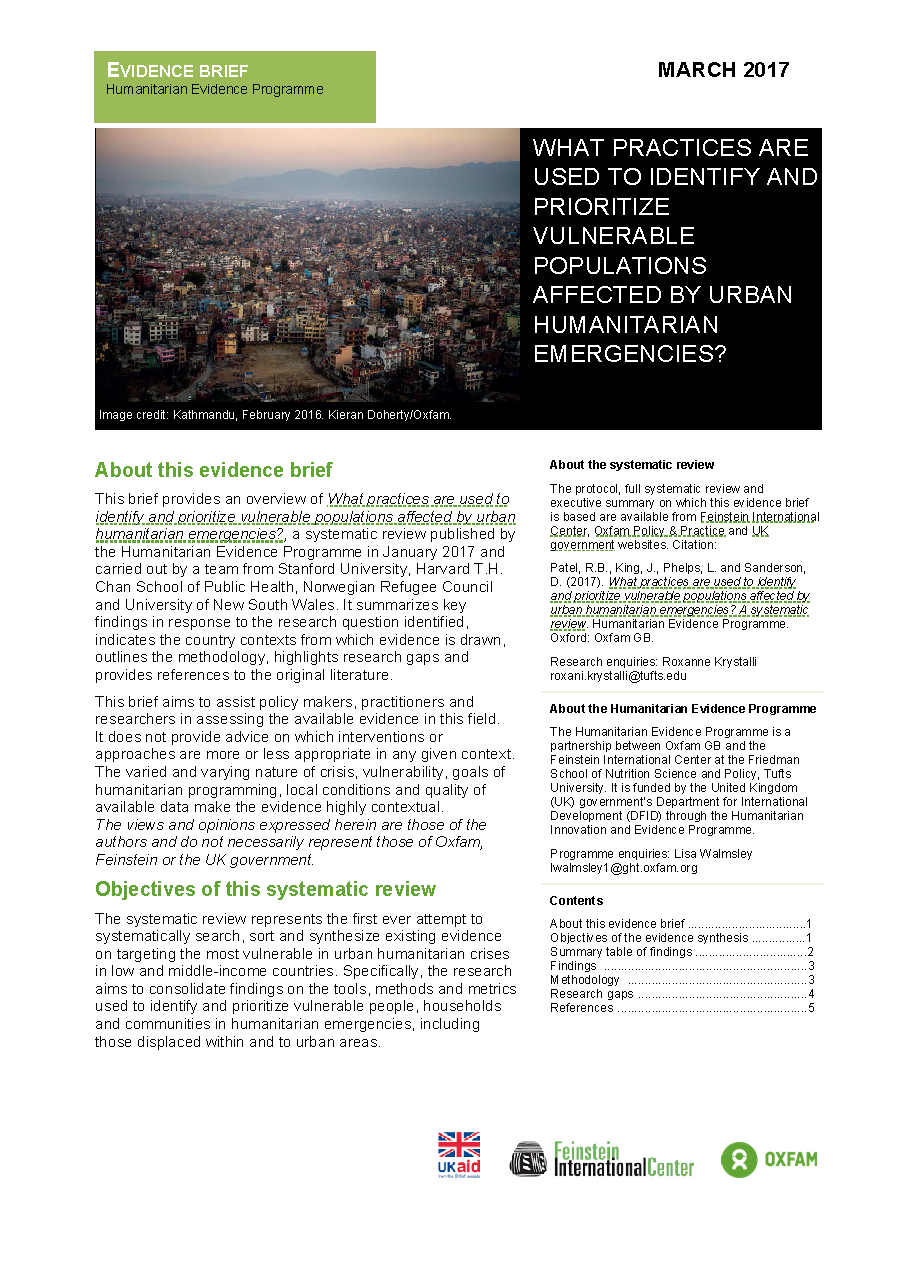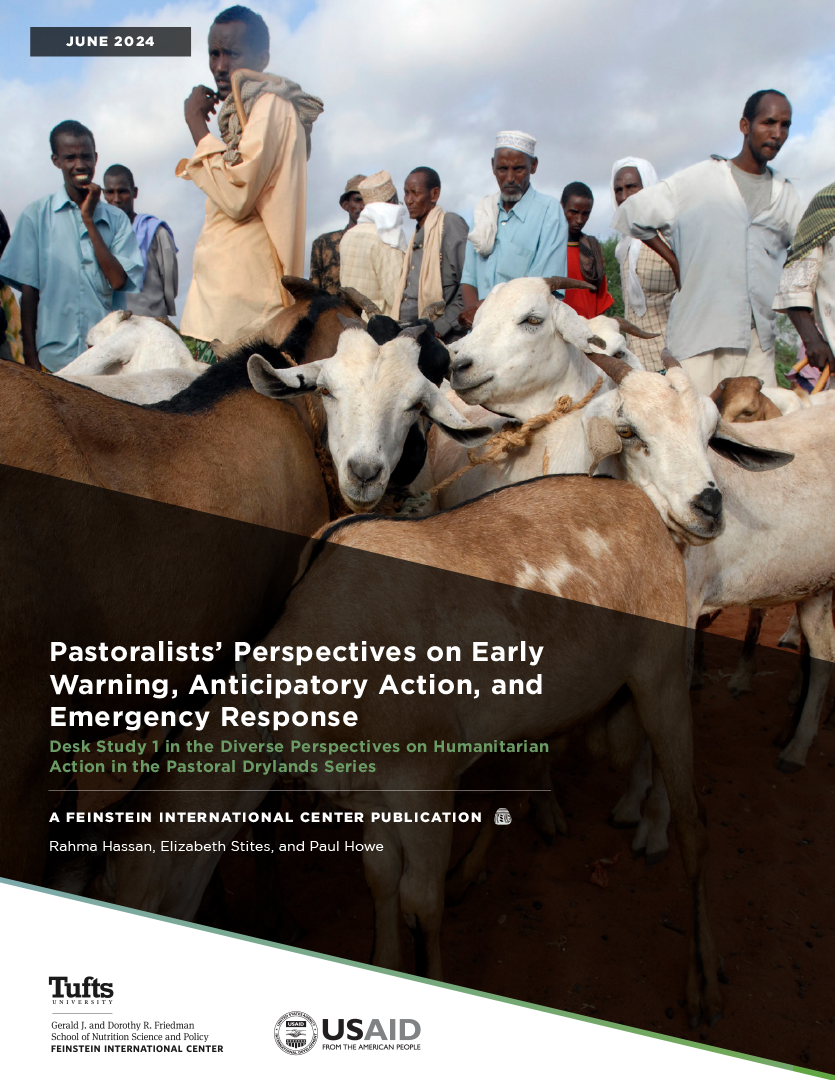This is an evidence brief, accompanying the full systematic review on urban practices to identify and prioritize vulnerable populations in humanitarian emergencies.
Individuals and organizations responding to humanitarian crises recognize the need to improve urban emergency response and preparedness – including the need to devise better methods for assessing vulnerability within urban populations. This systematic review represents the first ever attempt to systematically search, sort and synthesize the existing evidence in order to consolidate findings on the tools, methods and metrics used to identify and prioritize vulnerable people, households and communities, including those displaced within and to urban areas.
- The evidence brief accompanies a stand-alone executive summary and the full systematic review. It forms part of a series of humanitarian evidence syntheses and systematic reviews commissioned by the Humanitarian Evidence Program.







